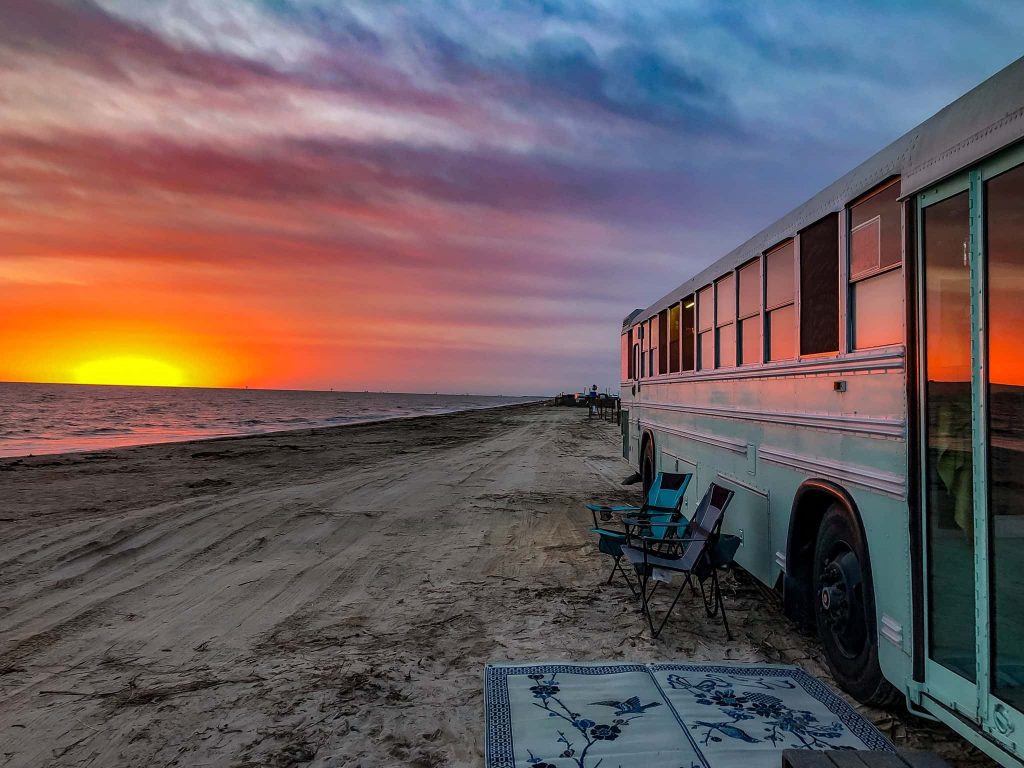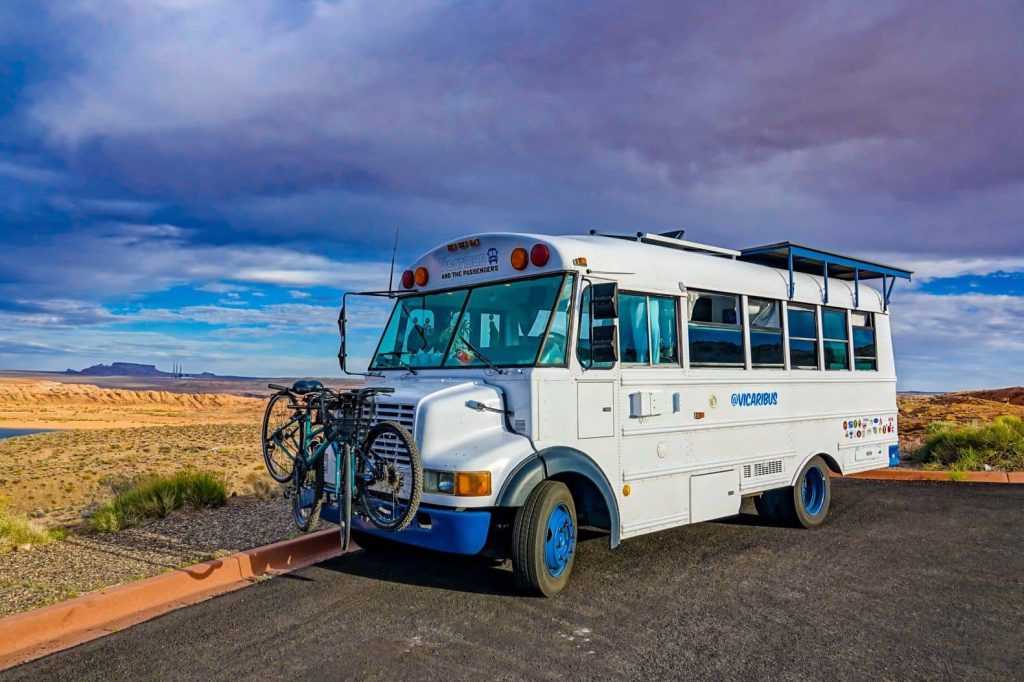Living in a skoolie (a school bus converted into a recreational vehicle) is not a new concept. Hordes of people do that not only save money but also have the experience of living in a customized motorhome where everything fits their needs and lifestyle choices. If you want to live in a skoolie, you need to learn plenty of new things. No, we are not talking about the renovations because that’s a totally different subject. The first hurdle is registration. How to register a bus as an RV? Do you have any idea about that?
A quick online search will produce scads of horror stories about the evasive treatment people get from their state’s Department of Transportation (DOT) or Department of Motor Vehicles (DMV) when applying to change the status of the bus into a private motorhome.
We’re going to break down the entire process into several sections and steps to clear all confusion.
Contents
A Breakdown of How to Register a Bus as an RV
You may question the necessity of registering a bus after modifying it into an RV. Well, there are several reasons.

A bus is a commercial vehicle, so its insurance premium is higher than a private vehicle, like a motorhome. Also, a regular driver’s license is enough for driving an RV, but driving a private bus may require a different license type, depending on your state’s laws.
Now, coming to the main topic: how to register a bus as an RV.
The registration takes some effort, but nothing is too complicated here. Contacting the DMV is the first step to take. Even if the local DMV cannot help, the representative there will refer you to the bigger DMV that can.
The rules and requirements may vary slightly from state to state. We’re going to discuss the general list of requirements and documents demanded by most states. The rest you have to figure out while working with the state’s DMV.
Current Title
You must have the current title of the bus. Don’t have one? Then, you need to get a salvage title even if the bus is not damaged. Know your state’s laws before setting out to get the title.
Bill of Sale
A purchase receipt that you got from the seller. To be legally valid, it has to have certain information, which you will get on the DMV website. The site is likely to have a form for ‘sill of sale’. You just need to download it and fill it out.
The required information pieces are likely to be:
- Date of purchase and buying price
- Vehicle’s description (make, model, and year)
- Vehicle Identification Number (VIN)
- Name, address, and phone number of the seller
- Name, address, and phone number of the buyer
- Warranty information
Certification of Weight
Many recycling centers, truck stops, truck repair shops, and garbage dumps have facilities to weigh a vehicle. However, find a shop that provides a weight certification too. They will offer the certificate as an official form, acceptable by the DMV.
Photos of Your Conversion
Have you thought of documenting the conversion when looking for ways about how to register a bus as an RV? If not, start doing it. NOW!

You will need these photos to show at the DMV and get insurance. DMV will require proof of the conversion of the bus into an RV. Just take some pictures of the exterior and interior featuring the changes. You may remove the folding stop signs and flashing lights according to the laws of your state. Your DMV will provide a list outlining what is needed to be removed and what to be included.
For example, the conversion requirements in the state of Texas demand the RVer to install several life support systems. In fact, the modified bus has to have permanently installed any four of these following systems:
- A 110-125 volt electric power supply;
- Portable water supply system featuring a water tank, sink, and faucet along with an external supply connection;
- Toilet with external dumping system;
- Cooking facility with an on-board fuel source;
- A gas or electric refrigerator; or
- An AC unit or heating system that draws power from an independent onboard source other than the engine.
You should start with the renovation long before applying for the reclassification. Remember that the DMV will send its representative to inspect the modifications. Sloppy work will not cut it here.
Physical Inspection
The photos will not be sufficient for some DMVs. They will send someone to do a physical inspection of the bus. There’s nothing to be worried about if you have fulfilled all the requirements.
Besides the modifications, your bus needs to meet the DOT’s safety standards for the road. Make sure that the bus will pass all the tests at the right time.
Proof of Insurance
This is another hurdle to overcome in your journey of how to register a bus as an RV.
Finding coverage is challenging because the rules vary from state to state. Major insurance companies like Progressive, State Farm, and Geico cover self-converted school buses in some states. But they won’t accept skoolie in some other states unless the renovation work is done by a conversion company.
If yours one is a self-converted bus, look into the policies of these companies for your state. If your skoolie does not qualify, look into the policies offered by Good Sam and National General. These two companies accept all kinds of bus-cum-RVs as long as they are fully converted.
Each company demands different requirements, but general documents include photographic proof of conversion and copies of the bill of sale and title.
Registration
After completing the conversion and gathering all the documents, submit the paperwork to the DMV. Your application is likely to include several forms and supporting documents. The review will take a few weeks, but you will get the registration if the paperwork is all right.
This is how to register a bus as an RV. But you are not completely done yet. You may need to upgrade the driver’s license depending on the bus you have purchased.
Do You Need a Driver’s License Upgrade?
The size (or the weight, more precisely) will determine whether you need a new type of driver’s license. Most states provide the driver’s license according to the Gross Vehicle Weight Rating (GVWR)—referring to the maximum operating weight of the vehicle.

If the converted bus weighs more than 26,001 pounds, you will need to upgrade your Class C license (regular car driver) to a Class B (big vehicle driver). Class A license is for the biggest vehicles. This license differs from the Commercial Driver’s License (CDL) and its name could be different from one state to another. For example, this Class B driver’s license is known as a ‘House Car’ license in California.
Check your state’s DMV to see if your vehicle needs a new license. If yes, you may need to sit for an exam and give a driving test to prove your qualifications.
Too Complicated? Register in Vermont!
If collecting all the paperwork and finding a suitable insurance policy seems too much work, do the registration from Vermont. Since 2018, the state has changed its policies for skoolie registration. To the surprise of everyone, it has made the rules more lenient compared to other states. But the best part about it is that you don’t need to be a Vermont resident to register your bus from that state. How cool!
So, how to register a bus as an RV in Vermont? The process is quite easy. You don’t even need to provide any insurance document, proof of conversion, and the DMV won’t require a physical inspection.
However, the registration depends on the age of your vehicle. You will get a real title if your bus is less than 15 years old. If it’s older, you will only get a transferable registration that is not as good as a title because you can use it only to change the registration to another state.
You will need a form to apply for the re-titling in Vermont. The website of the State of Vermont has this VD119 form. Download it and fill up with all the necessary information. Then, send it along with the bill of sale and existing title to the Vermont Department of Motor Vehicles.
You should better check the State of Vermont website to make sure the list of documents they require for re-titling. Expect to get the registration done along with receiving a license plate within four to eight weeks.
You have probably gotten a clear idea about how to register a bus as an RV. All you have to do is to learn the rules and follow them systematically. And, if you still feel at a loss, the state of Vermont is here to say ‘welcome’.

Do you have to be a resident of Vermont to register it there?